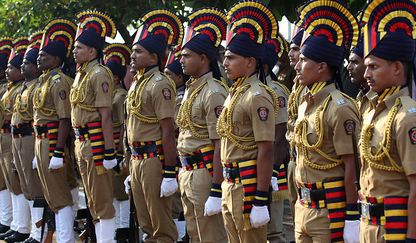Interlinking Policing and Economic growth
Economic growth is driven by several macro and micro economic indicators. Investment environment which is often regarded as important contributor to the development and growth could be dragged by the increased crimes and deteriorating law and order condition. Competitiveness, business environment, resource allocation, and FDI are such factors which are better featured in a stable and peaceful environment, while instability creates uncertainty and inefficiency in the businesses. Fearless atmosphere, investment confidence and security get prime importance in a globalised and increased flow of economic investment. A report in South Africa acknowledged that increase in violent crimes has significant negative impact on economy due to loss of foreign investment and productivity.
A study shows that with a crime growth of 10% can reduce the annual per capita GDP by 0.6 to 0.7%.
Some insights to Indian condition
The sorry state of affairs in the north eastern and few south-eastern states like Jharkhand and Orissa speak of its instability and poor development due to extremism and insurgency, drug trafficking, and other related crimes. Development programmes and the economic prosperity to these regions take back seat in such situation. The better investment environment in the western and the central India including the southern states shows the better economic growth. It explains the higher investment in these states and much better development.
The crime-related cost beard by the state, individual or the family could be used for the betterment of the economy. The crime-related cost means medical care cost, lost in earnings, property loss and the criminal justice system. Also a lot of funds of central government being used for giving the police protection, legal and adjudication services and correction programmes.
Western countries with the increased spending, political will, better technology use, made the law & order situation under control e.g. the ‘CompStat’ data-driven programme has transformed the street protection in UK. Other technological usage like mobile phone tracking, call analysis, online banking, surveillance, tracking the digital foot and some other measures needed to be steeped up.
State of policing in India
Political will, shared values of governance, vibrant civil society and administrative capacity are the prerequisite to the successful reforms. Unfortunately, because of lack of political will and inadequate push from the civil society we were unable to bring any systemic police reforms in the country. The ability to uphold the Rule of law deteriorated, while the police remained highly politicized. And the worst adds to it as it is non-uniform in its implementation because of the law and order being in the state list. India is bearing the burden of the many archaic British laws which at many instances do not suits to our country in the present condition. Indian Penal Code (IPC), the Criminal Procedure Code (CrPC), Indian evidence act, which defines the criminal behavior, their punishment largely remains the same except few changes. It is also to be noted that the archaic Indian police act of 1861, still governs the constitution and organization of the police forces in all the Indian states.
Availability of police forces in India is also skewed at 130 per lakh population and worse in many states like UP and Bihar with 70 per lakh. However the UN norm is to keep the ratio to 220. The criminal justice system is ineffective because of large number of pending cases and poor availability of judges in the courts.
Policing with respect for dignity and basic human rights is also stated in the internationally accepted principles of policing signed in Bonn in 1996. Hence it is the prerequisite to provide a safe environment to the investor and the people living there in.


